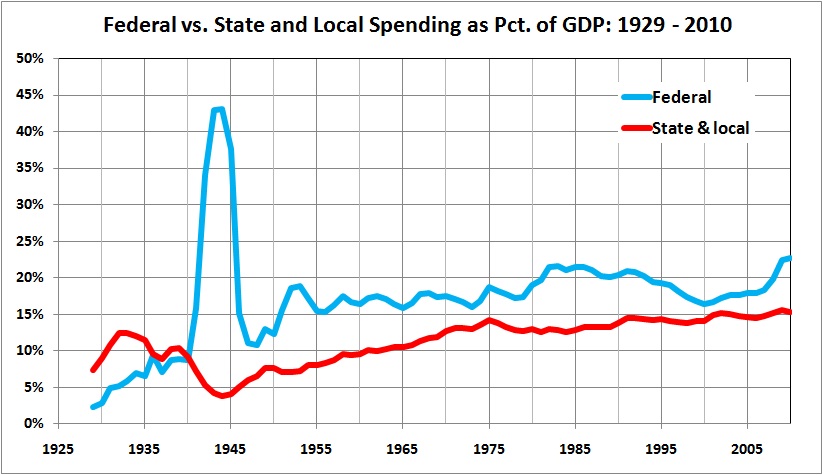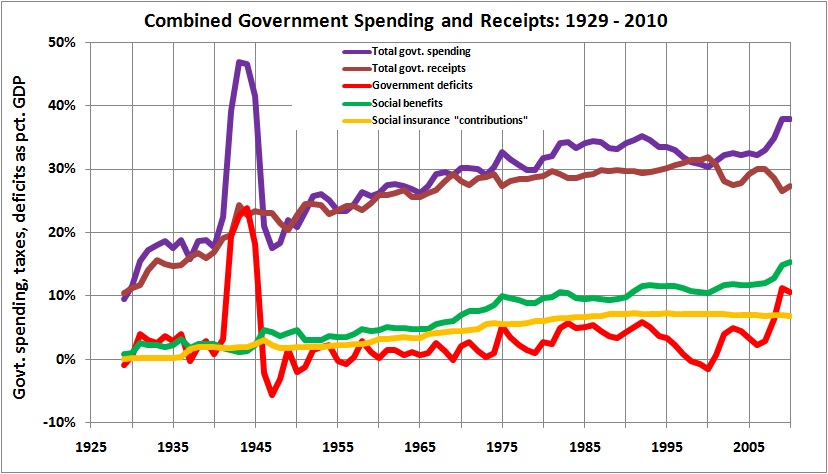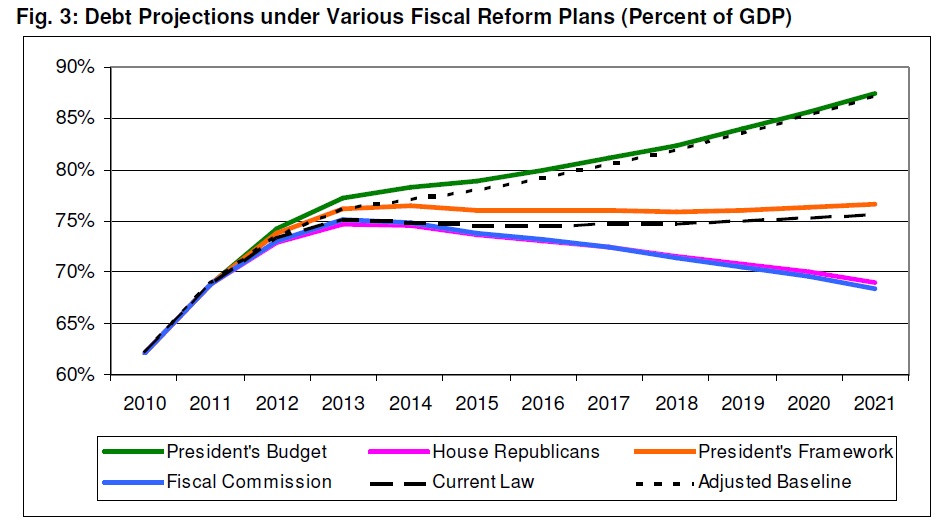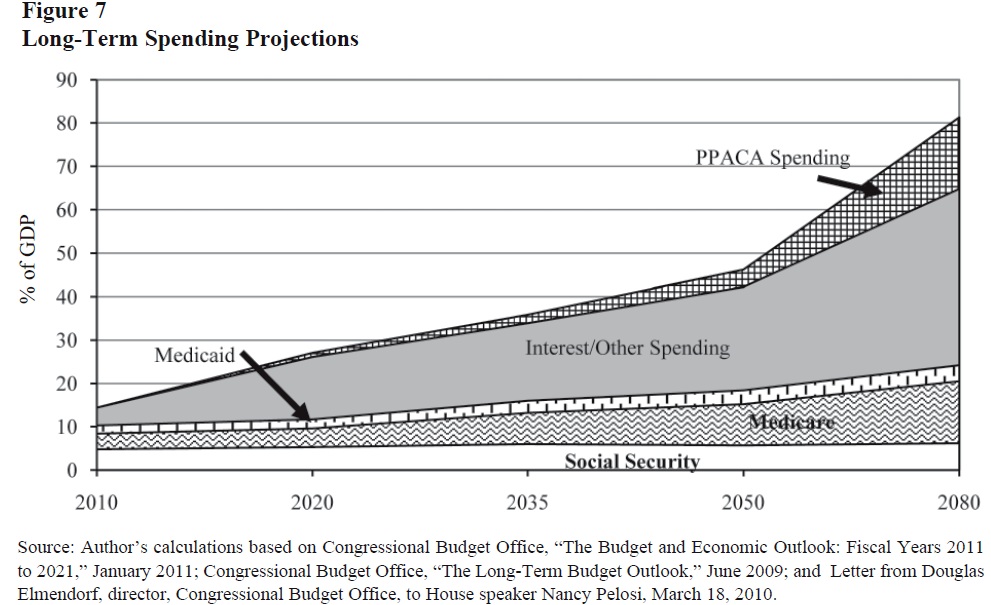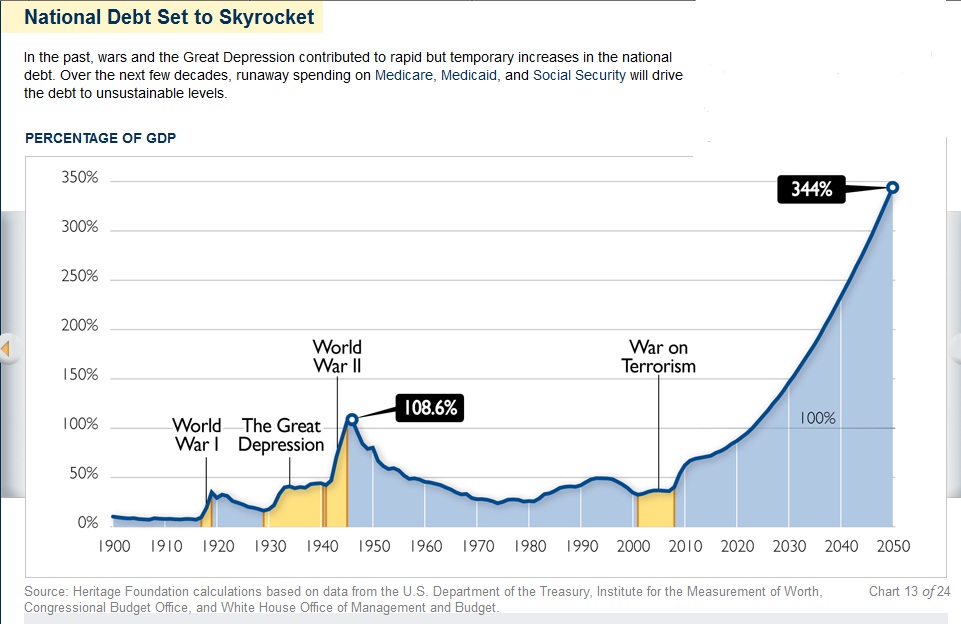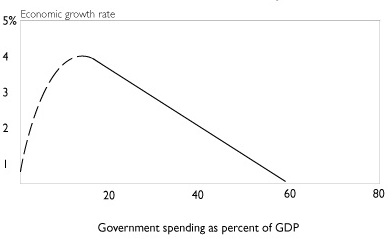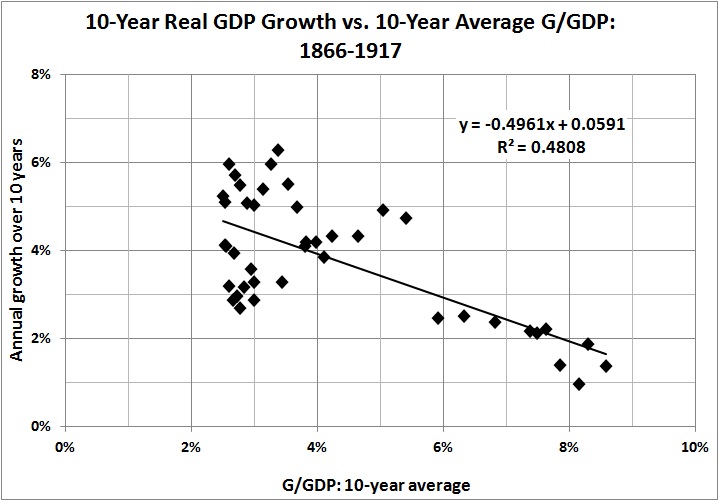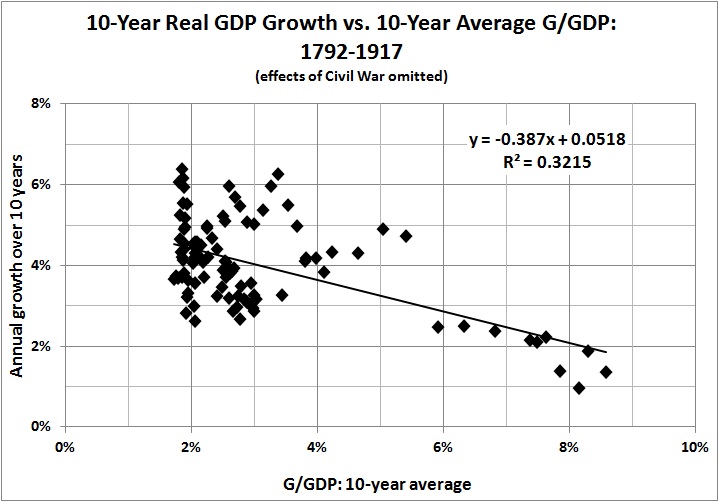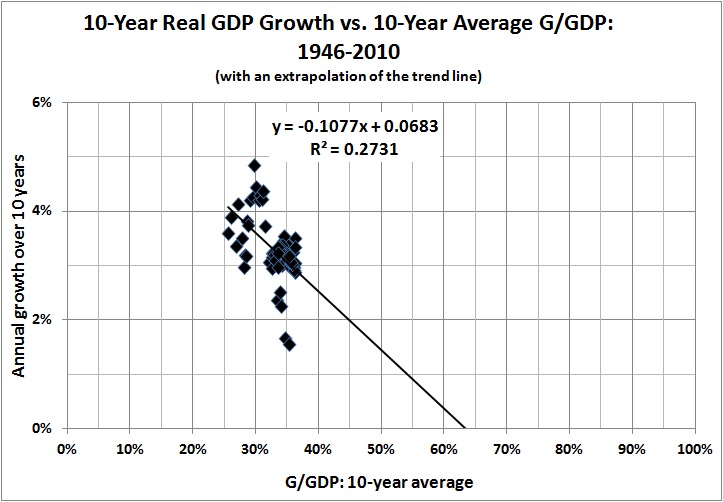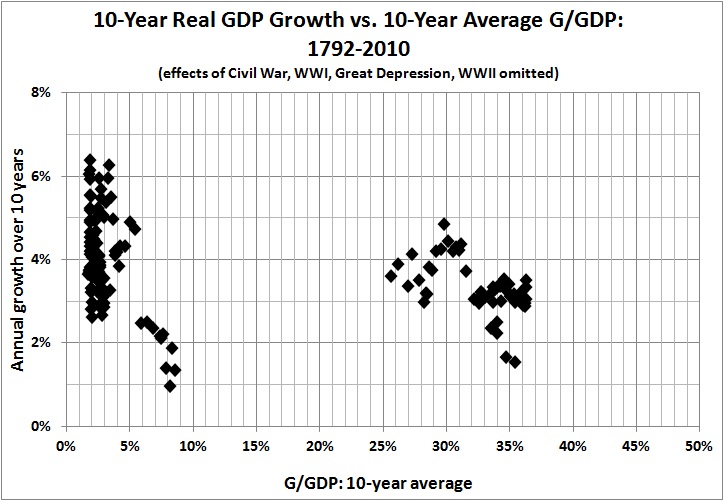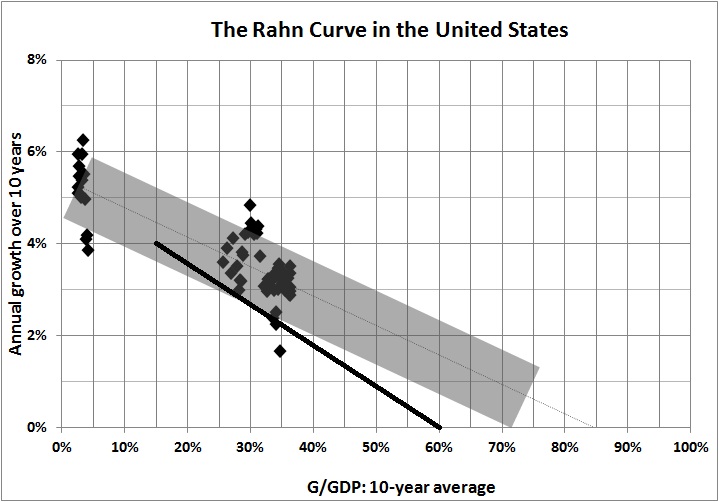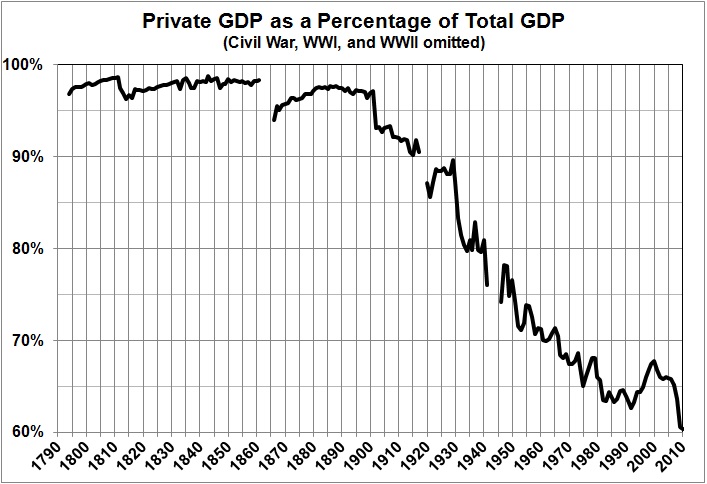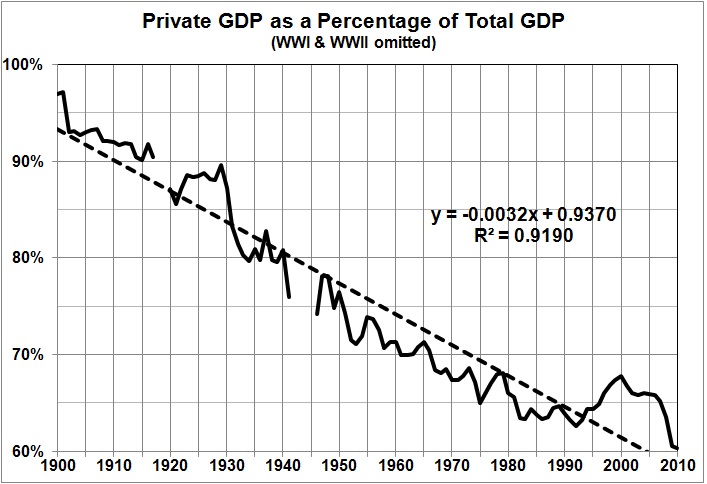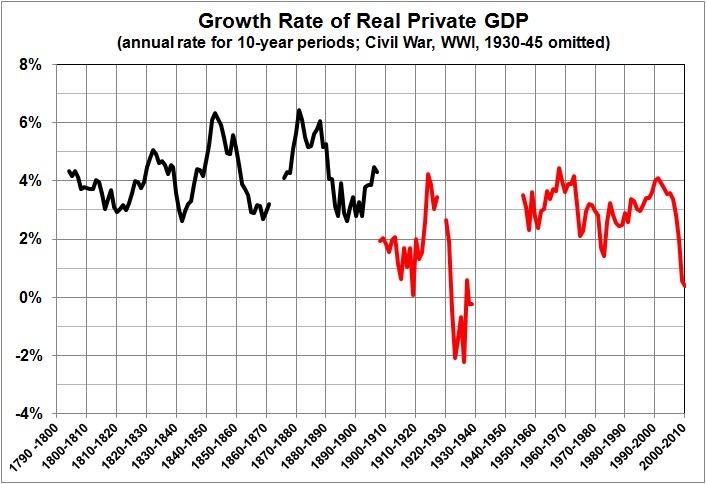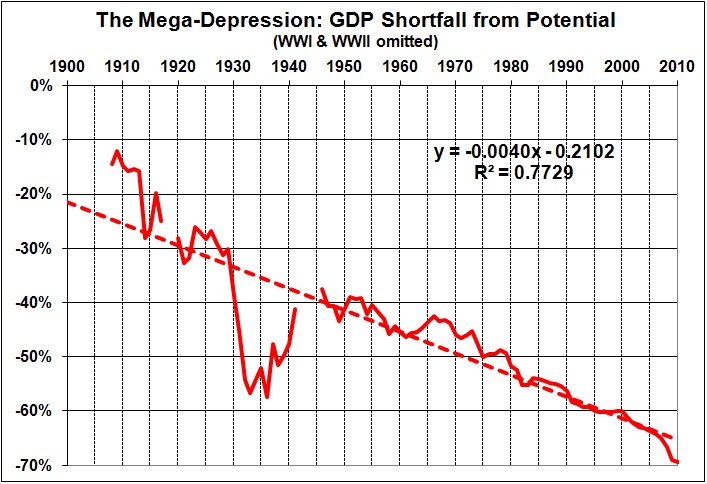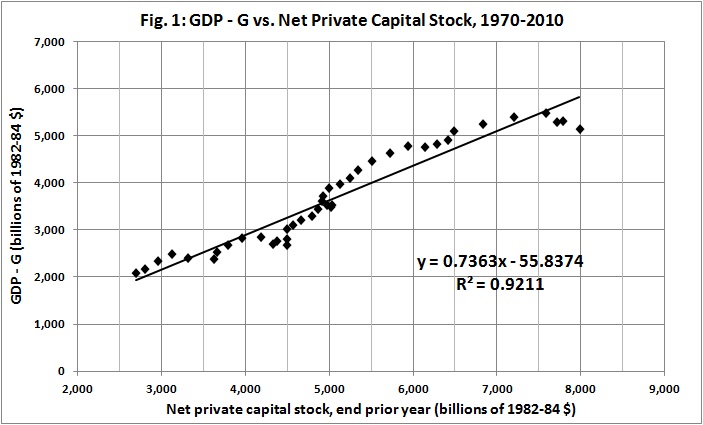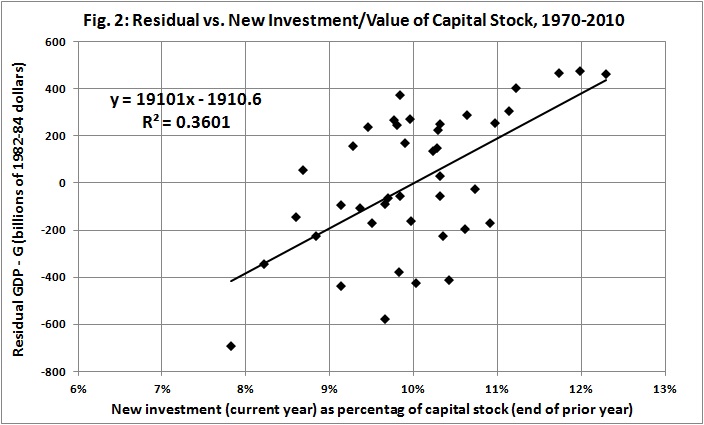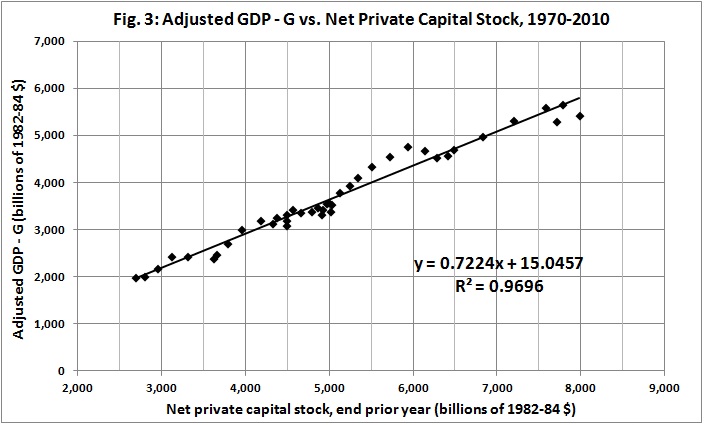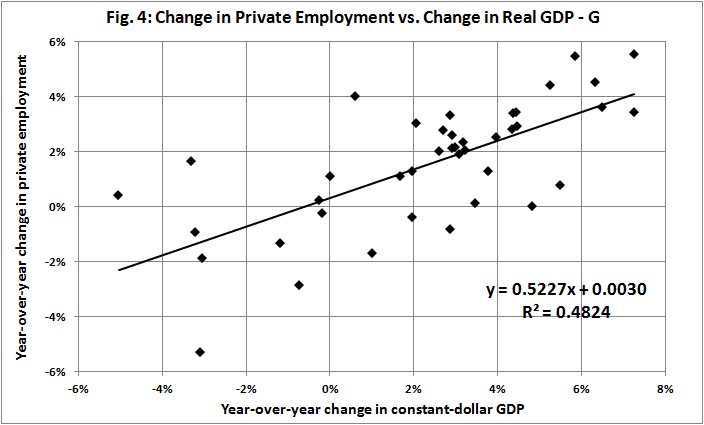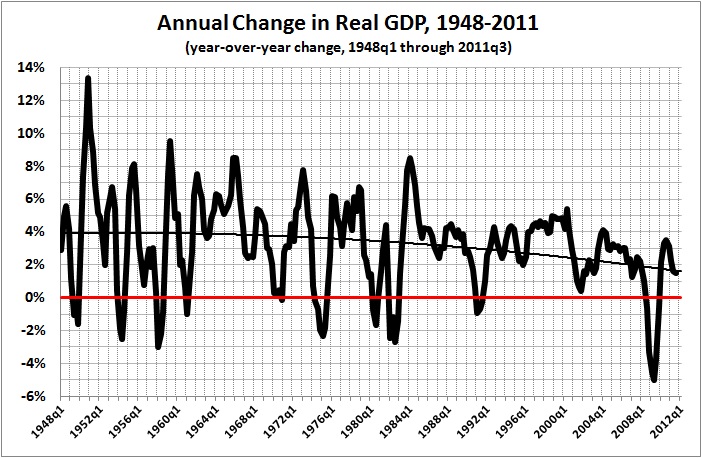Some previous posts about 9/11, its roots, and its politics:
Prologue
This is about the broader implications of the riotous reaction of Muslims to cartoons that ran in a Danish newspaper last October. For the full story, with commentary and plenty of relevant links, go to Michelle Malkin’s blog and start with her post of January 30, “Support Denmark: Why the Forbidden Cartoons Matter,” then read on to the present.
My jumping-off point is this kind of news:
Protesters in Pakistan Target West
LAHORE, Pakistan – Thousands of protesters rampaged through two cities Tuesday, storming into a diplomatic district and torching Western businesses and a provincial assembly in Pakistan’s worst violence against the Prophet Muhammad drawings, officials said. At least two people were killed and 11 injured.
Three Killed in Massive Cartoon Protests
PESHAWAR, Pakistan – Gunfire and rioting erupted Wednesday as tens of thousands of people took to the streets in Pakistan’s third straight day of violent protests over the Prophet Muhammad cartoons. Three people were killed, including an 8-year-old boy.
The second story continues with this:
The European Union condemned both the cartoons, first printed in a Danish newspaper in September, and what it called “systematic incitement to violence” against European diplomatic missions by some unidentified governments.
Bruce Bawer has more about European groveling, and isolated acts of courage, here. Michelle Malkin has plenty to say about the groveling of major American media outlets at her blog (e.g., here). A recent story from the zone of political correctness the academy, reports the suspension of the editors of the Daily Illini (the “independent” student newspaper of the University of Illinois) for having reproduced the cartoons.
The reactions on the part of the EU, much of America’s press, and (I safely assert) most of academia are manifestations of a widespread urge to appease fanatical Islam, about which appeasement I will say more later in this post.
I write here without animus toward Islam, as a religion. My attitude toward Islam as a cultural amalgam of the religious and the social is expressed ably by Occam’s Carbuncle:
. . . What little I know of [Islam] isn’t very appealing at all. It’s rather medieval if you ask me. Not that I hate Muslims. . . . I just don’t care. . . . I don’t believe what they believe and I’m not about to start. Ever. More importantly, I will read what I want to read and I will express myself as I see fit, not within the strictures of Sharia [the code of law based on the Koran], but according to my rights as a citizen of a liberal democracy. That means Muslims do not have the right to impose upon me their own views of what is or is not proper, what is or is not sacrilege or blasphemy. . . . They may not damage my property or my person as reprisal for anything I might say or write. They may express themselves as freely as I. They may insult me. They may shun me. They might even consider ignoring me. But they may not threaten me. They may not do harm in furtherance of the precepts of their religion, just as I may not do harm to show my objection to their dogma.
The following concepts are central to my analysis of Islamic culture, as a force in the affairs of the world:
Despair: To be overcome by a sense of futility or defeat.
Paranoia: Extreme, irrational distrust of others.
Now, on with the post.
Executive Summary
A sense of futility or defeat can be inflicted upon a people by its enemies, or it can be self-inflicted by the culture of the people. A mass culture that prizes mysticism at the expense of rationality and industriousness will, if only subconsciously, come to envy cultures that profit from rationality and industriousness. But the people of the mystical culture will disavow their envy, because to do so would be to admit the inferiority of their culture. They will, instead, take the paranoid view that their backwardness is somehow caused by other cultures — cultures that are “out to get them.” This paranoia focuses the despair of the backward culture, so that its emerges in the form of rage against the culture’s supposed enemies.
The paranoid leaders of a paranoid culture pose an especial danger because of their ability to marshal weapons of mass destruction, and to deploy those weapons in a “righteous” war. In the case of Islamic paranoia, the handwriting is on the wall — and writ in blood.
The West can either act to prevent repititions of 9/11, Madrid, and London — on a larger scale — or it can do nothing and, in doing nothing, invite the conflagration. The choice is nigh. The will to act is in doubt.
Islam: A Culture of Despair and Paranoia
I am struck by the similarity of the Muslim riots — in France last year and in the Middle East this year — to the riots in the “ghettos” of Detroit, Los Angeles, etc. Those riots, like the Muslim ones, were sparked by specific events (e.g., the murder of MLK Jr. and the beating of Rodney King). But those sparks caused explosions because they touched the volatile fuel of desperation.
Whence that fuel? It is created by the chronic illness of the underlying culture. A chronically ill person experiences stress because of his inability to function normally. Prolonged stress can lead to frustration, anger, hopelessness, and, at times, depression. The chronic, self-generated illness of the Muslim culture is similar to that of the black and white “redneck” culture:
There have always been large disparities, even within the native black population of the U.S. Those blacks whose ancestors were “free persons of color” in 1850 have fared far better in income, occupation, and family stability than those blacks whose ancestors were freed in the next decade by Abraham Lincoln.
What is not nearly as widely known is that there were also very large disparities within the white population of the pre-Civil War South and the white population of the Northern states. Although Southern whites were only about one-third of the white population of the U.S., an absolute majority of all the illiterate whites in the country were in the South. . . .
Disparities between Southern whites and Northern whites extended across the board from rates of violence to rates of illegitimacy. American writers from both the antebellum South and the North commented on the great differences between the white people in the two regions. So did famed French visitor Alexis de Tocqueville.
None of these disparities can be attributed to either race or racism. . . . The people who settled in the South came from different regions of Britain than the people who settled in the North–and they differed as radically on the other side of the Atlantic as they did here–that is, before they had ever seen a black slave.
Slavery also cannot explain the difference between American blacks and West Indian blacks living in the United States because the ancestors of both were enslaved. When race, racism, and slavery all fail the empirical test, what is left?
Culture is left.
The culture of the people who were called “rednecks” and “crackers” before they ever got on the boats to cross the Atlantic was a culture that produced far lower levels of intellectual and economic achievement, as well as far higher levels of violence and sexual promiscuity. That culture had its own way of talking, not only in the pronunciation of particular words but also in a loud, dramatic style of oratory with vivid imagery, repetitive phrases and repetitive cadences.
Although that style originated on the other side of the Atlantic in centuries past, it became for generations the style of both religious oratory and political oratory among Southern whites and among Southern blacks–not only in the South but in the Northern ghettos in which Southern blacks settled. . . .
The redneck culture proved to be a major handicap for both whites and blacks who absorbed it. Today, the last remnants of that culture can still be found in the worst of the black ghettos, whether in the North or the South, for the ghettos of the North were settled by blacks from the South. The counterproductive and self-destructive culture of black rednecks in today’s ghettos is regarded by many as the only “authentic” black culture–and, for that reason, something not to be tampered with. Their talk, their attitudes, and their behavior are regarded as sacrosanct. (Thomas Sowell, at OpinionJournal, paraphrasing his essay “Black Rednecks and White Liberals,” from the eponymous book.)
Islamic culture, broadly speaking, seems much like redneck culture in its preference for mysticism or ritual over rationality and industriousness — as well as in its attitude toward women. The adherents of an irrational, indolent culture who have any exposure to other cultures must know that their culture holds them back materially, and that they would be better off if they were to adopt the rational and industrious ways of other cultures. (The closely held wealth of the oil sheikhs has nothing to do with Islam; it is a fortuitous artifact of the geology of the Middle East and the industry of the West.) But to adopt the ways of wealthier cultures is to admit the shortcomings of one’s own culture — and to break with one’s family, friends, and authority figures.
Thus the adherents of the backward culture remain mired in their self-inflicted despair and, instead of blaming themselves and their culture for their backwardness, they blame the outsiders whose relative success they envy. And when their despair erupts in rage it is (in the paranoid view) legitimate to attack the blameworthy — “city folk,” “honkies,” Korean and Jewish merchants, “infidels,” and so on — because they are responsible for keeping us down.
Islamic Paranoia Writ Large
Paranoia is bad enough when it motivates (sometimes organized) mobs to kill, plunder, and destroy. Paranoia is far worse when it motivates leaders who command (or seek to command) the technology of mass destruction — leaders such as Hitler, Stalin, bin Laden, and Iran’s Mahmoud Ahmadinejad. Ahmadinejad is perhaps best known to Americans for his “alleged” involvement in the Iran Hostage Crisis of 1979 and for his utterances about the United States and Israel; for example:
The establishment of the occupying regime of Qods [Jerusalem]was a major move by the world oppressor [the United States] against the Islamic world. . . .
The Palestinian nation represents the Islamic nation [Umma] against a system of oppression, and thank God, the Palestinian nation adopted Islamic behavior in an Islamic environment in their struggle and so we have witnessed their progress and success. . . .
Our dear Imam [Ayatollah Khomeini] said that the occupying regime [Israel] must be wiped off the map and this was a very wise statement. We cannot compromise over the issue of Palestine. Is it possible to create a new front in the heart of an old front. This would be a defeat and whoever accepts the legitimacy of this regime [Israel] has in fact, signed the defeat of the Islamic world. Our dear Imam targeted the heart of the world oppressor in his struggle, meaning the occupying regime. I have no doubt that the new wave that has started in Palestine, and we witness it in the Islamic world too, will eliminate this disgraceful stain from the Islamic world. But we must be aware of tricks.
For over 50 years the world oppressor tried to give legitimacy to the occupying regime and it has taken measures in this direction to stabilize it. . . .
Recently they [the Israelis] tried a new trick. They want to show the evacuation from the Gaza strip, which was imposed on them by Palestinians [oh, really?], as a final victory for the Palestinians and end the issue of Palestine. . . .
I warn all leaders of the Islamic world that they should be aware of this trick. Anyone who recognizes this regime [Israel] because of the pressure of the World oppressor, or because of naiveté or selfishness, will be eternally disgraced and will burn in the fury of the Islamic nations. (From a speech given in Tehran, Iran, on October 16, 2005, to an Islamic Student Associations conference on “The World Without Zionism.”)
The Culture Clash and the Final Showdown
Ahmadinejad, like bin Laden, whips despair into rage, a rage that is aimed at the imagined “enemies” of Islam. Bin Laden, of course, has succeeded in turning some of those imagined enemies into real ones by attacking them. Ahmadinejad seems bent on following bin Laden’s lead, but on a larger scale.
It is too late to appease such fanatics — much as some Westerners would like to try appeasement — because The West (the United States, in particular) has “insulted” Islamic fanatics in three fundamental ways: by the creation of Israel, by the “exploitation” of the Middle East’s geology, and by the defense of Israel and those Middle Eastern governments that permit the “exploitation.” Given that history, the only way to appease paranoid Islamists is for Americans to don the raiment of mystical asceticism, which might appeal to a select circle of self-flagellants, but to very few others of us.
What I am saying, really, is that a final showdown with fundamentalist Islam is inevitable. Most Americans did not understand the inevitability of that showdown until September 11, 2001 — and many Americans (including most “intellectuals” and many politicians who should know better) still refuse to acknowledge the significance of that day’s events. The doubters seem to be trapped in 1938, waiting for the UN or a Democrat president to announce “peace in our time,” or in 1939-40, unwilling to believe that America could be the target of a fanatical ideology.
It is futile to hope that hard-core Islam can be deflected through political correctness (e.g., banning speech that might offend Muslims), diplomatic maneuverings, support for dissidents, or other such transparently weak responses to aggression, terrorism, and the accumulation of weapons of mass destruction. In fact, such responses are worse than futile; they encourge what they seek to discourage because they display weakness — just as displays of weakness on the part of the United States from 1979 onward encouraged the events of September 11, 2001.
The next stage of the showdown, if it is allowed to happen, will come when al Qaeda (or one of its ilk) acquires and uses weapons of mass destruction in Europe or the United States. The following stage of the showdown, if it is allowed to come to that, will come when Iran acquires nuclear weapons.
I repeat: The question is not whether those events will happen, but when they will happen if they are not thwarted by intelligence-gathering, clandestine operations, conventional military operations, and massive strikes against hard military targets (including nuclear “power” facilities). Force is the only thing that will stop Islamic fanatics; force is the only response that they will heed — just as the Japanese, fanatical as they were, had no choice in the end but to abandon their fanatical ways.
It Is a Question of Will
We had better get used to that idea that war is the answer, and see to it that adequate force is used, sooner rather than later. Those who would use force against us will heed only force. Whether, in defeat, they will respect us or “merely” fear us is irrelevant. We are not engaged in a popularity contest, we are engaged in a clash of civilizations, which Norman Podhoretz rightly calls World War IV.
On our present political course, however, we will suffer grave losses before we get serious about winning that war. The Left (or the Opposition, as I now call it), seems insensitive to the danger that faces us. The voices of doubt and division are many and loud. They range from librarians, academicians and celebrities (too numerous to link), and hypocrites in the media to former vice president Gore and many current members of Congress (e.g., these), some of whom would prefer to impeach President Bush for defending us through a constitutional surveillance program than face up to the enemy without. Their preferred vision of government — strength at home and weakness in foreign affairs — is precisely opposite the vision of the Framers of the Constitution.
Ben Shapiro goes too far in suggesting “that Congress ought to revivify sedition prosecutions,” but he is right about the likely effect of the Opposition’s outpourings; for example:
Let us consider . . . the probable consequences of Gore’s mea culpa [before a Saudi audience] on behalf of the “majority” of his countrymen. No doubt his words will fuel the massive tide of propaganda spewing forth from Muslim dictatorships around the globe. No doubt his words will be used to bolster the credibility of horrific disinformation like the Turkish-made, Gary-Busey-and-Billy Zane-starring monstrosity “Valley of the Wolves: Iraq,” which accuses American troops of war atrocities and depicts a Jewish-American doctor (Busey) slicing organs out of Arab victims and shipping the body parts off to New York, London and Israel. No doubt Gore’s speech will precipitate additional violence against Americans in Iraq and around the globe.
(Not to mention the media’s constant re-hashing of Abu Ghraib.)
Thomas Sowell, as usual, gets to the heart of the matter:
With Iran advancing step by step toward nuclear weapons, while the Europeans wring their hands and the United Nations engages in leisurely discussion, this squeamishness about tapping terrorists’ phone contacts in the United States is grotesque.
Has anyone been paying attention to the audacity of the terrorists? Some in the media seem mildly amused that Palestinian terrorists are threatening Denmark because of editorial cartoons that they found offensive.
Back in the 1930s, some people were amused by Hitler, whose ideas were indeed ridiculous, but by no means funny.
This was not the first threat against a Western country for exercising their freedom in a way that the Islamic fanatics did not like. Osama bin Laden threatened the United States on the eve of our 2004 elections, if we didn’t vote the way he wanted.
When he has nuclear weapons, such threats cannot be ignored, when the choice is between knuckling under or seeing American cities blasted off the face of the earth.
That is the point of no return — and we are drifting towards it, chattering away about legalisms and politics.
Which leads me to the ultimate question, which James Q. Wilson addresses in “Divided We Stand: Can a Polarized Nation Win a Protracted War?” Wilson concludes:
A final drawback of polarization is more profound. Sharpened debate is arguably helpful with respect to domestic issues, but not for the management of important foreign and military matters. The United States, an unrivaled superpower with unparalleled responsibilities for protecting the peace and defeating terrorists, is now forced to discharge those duties with its own political house in disarray.
We fought World War II as a united nation, even against two enemies (Germany and Italy) that had not attacked us. We began the wars in Korea and Vietnam with some degree of unity, too, although it was eventually whittled away. By the early 1990s, when we expelled Iraq from Kuwait, we had to do so over the objections of congressional critics. In 2003 we toppled Saddam Hussein in the face of catcalls from many domestic leaders and opinion-makers. Now, in stabilizing Iraq and helping that country create a new free government, we have proceeded despite intense and mounting criticism, much of it voiced by politicians who before the war agreed that Saddam Hussein was an evil menace in possession of weapons of mass destruction and that we had to remove him.
Denmark or Luxembourg can afford to exhibit domestic anguish and uncertainty over military policy; the United States cannot. A divided America encourages our enemies, disheartens our allies, and saps our resolve–potentially to fatal effect. What Gen. Giap of North Vietnam once said of us is even truer today: America cannot be defeated on the battlefield, but it can be defeated at home. Polarization is a force that can defeat us.
Let us hope — against hope, I fear — that the Opposition comes to its senses before it is too late.
*****
Obama has released a paper titled “Empowering Local Partners to Prevent Violent Extremism in the United States.” It ends — as one would expect of a screed bearing Obama’s imprimatur — with a statement of “guiding principles”:
We must continually enhance our understanding of the threat posed by violent extremism and the ways in which individuals or groups seek to radicalize Americans, adapting our approach as needed….
We must do everything in our power to protect the American people from violent extremism while protecting the civil rights and civil liberties of every American….
We must build partnerships and provide support to communities based on mutual trust, respect, and understanding….
We must use a wide range of good governance programs—including those that promote immigrant integration and civic engagement, protect civil rights, and provide social services—that may help prevent radicalization that leads to violence….
We must support local capabilities and programs to address problems of national concern….
Government officials and the American public should not stigmatize or blame communities because of the actions of a handful of individuals….
Strong religious beliefs should never be confused with violent extremism….
Though we will not tolerate illegal activities, opposition to government policy is neither illegal nor unpatriotic and does not make someone a violent extremist….
That must set a record for the highest number of treacly, politically correct, operationally useless and self-defeating statements made in the span of a typewritten page.
If this is how the Obama administration sets about protecting Americans from terrorism, I fear that the next 9/11 isn’t far off.
For example, I challenge the administration to tell me that the following has not happened and cannot happen in the United States:
- A large but dispersed collection of improvised weapons for improvised, mortar-style attacks has been gathered in and around major U.S. cities and transportation and energy nodes.
- These weapons are positioned so that their activation, on a massive scale would create havoc and panic — and might well disrupt transportation and communication networks. (With a massive salvo, not every weapon must reach its target.)
- These weapons can be activated remotely — perhaps through signals transmitted from a single point — so that they can be fired in coordinated waves. Each successive wave disrupts and complicates rescue and recovery efforts that ensue from preceding waves, heightens confusion and panic, and lays the groundwork for economic disaster and political repression.
Obama’s political correctness, I fear, goes hand-in-hand with his demonstrated fecklessness in matters of national security. The intelligence and special operations forces of the United States should be capable of detecting and dismantling a threat of the kind outlined above. But will they be given the necessary resources and leeway? I doubt it.
*****
This is my 9/11 post, a day early. For my remembrance of 9/11, go here.
I reluctantly watched George W. Bush’s post-9/11 speech before a joint session of Congress. I say “reluctantly” because I cannot abide the posturing, pomposity, and wrong-headedness that are the usual ingredients of political speeches — even speeches that follow events like the attack on Pearl Harbor and the atrocities of 9/11. (Churchill’s rallying speeches during World War II are another thing: masterworks of inspirational oratory.)
In any event, Bush’s performance was creditable (thanks, no doubt, to his writers and ample preparation). And I found nothing to fault in what he said, inasmuch as I am a libertarian hawk. The vigorous and evidently sincere applause that greeted Bush’s applause lines — applause that arose from Democrats as well as Republicans — seemed to confirm the prevailing view that Americans (or their political leaders, at least) were defiantly united in the fight against terrorism.
But I noted then, and have never forgotten, the behavior of Hillary Clinton, who was a freshman senator. Some of Clinton’s behavior is captured in this video clip, from 11:44 to 12: 14. The segment opens with Bush saying
Terror unanswered can not only bring down buildings, it can threaten the stability of legitimate governments. And you know what, we’re not going to allow it.
The assemblage then rises in applause. The camera zooms to Hillary Clinton, who seems aware of it and stares at the camera briefly while applauding tepidly. (Compare her self-centered reaction with that of the noted camera-hog Chuck Shumer, who is standing next to her, applauding vigorously, and looking toward Bush.) Clinton then turns away from the camera and, while still applauding tepidly, directs a smirk at someone near her. I also noted — but cannot readily find on video — similar behavior, include eye-rolling, at the conclusion of Bush’s speech.
Clinton — as a veteran political campaigner who knew that her behavior would draw attention — was sending a clear signal of her reluctance to support Bush because … because why? Because he had an opportunity for leadership that her husband had squandered through his lame responses to the 1993 bombing of the World Trade Center, the downing of U.S. helicopters in Somalia, and the bombings of U.S. embassies in East Africa? Because Bush was a Republican who had won the presidency after great controversy? Because she resented not being at the center of attention after having been there for eight years, as an influential FLOTUS?
Yes Clinton was “hawkish” on the wars in Afghanistan and Iraq. But I will always suspect that her hawkishness was, in part, a kind of atonement for her public display of disdain for George W. Bush on an occasion when such a display was inappropriate. No president should be given leave to do as he will, for any reason, but neither should his unexceptionable remarks on a solemn occasion be mocked.
Regardless of Clinton’s later stances, her behavior on January 20, 2011, signaled that the war on terror would become a partisan feast for Democrats and head-in-the clouds pseudo-libertarians. And it became just that.
*****
For an egregious view of 9/11 and events since, see Robin Hanson’s post,”Forget 9/11.” Read my comment.* And then forget Robin Hanson. What a jerk.
P.S. Hanson can shove Krugman up his a**, and vice versa. They make a nice couple. Bill Vallicella, on the other hand, is a voice of reason, as is another Hanson (Victor Davis).
P.P.S. See also my previous post about 9/11, “September 20, 2001: Hillary Clinton Signals the End of ‘Unity’.”
P.P.P.S. If you wonder why I react so strongly to Hanson and Krugman, see “September 11: A Remembrance.” I despise the likes of Hanson and Krugman, whose extreme libertarianism and extreme statism seem unbounded by taste and reality.
__________
* Defense against terrorists, not solidarity with victims, explains the “pissing away” of three trillion dollars. But you are not in a position to say that it was “pissed away,” unless you happen to know, with some certainty, just how much or how little physical and economic security was bought with the three trillion dollars. I detect a bias on your part against defense spending. Or do you believe that the U.S. wouldn’t have been attacked if only (insert your favorite gripe against U.S. foreign policy here)?
What does the fact that half a billion persons have died since 9/11 have to do with the deaths of the three thousand victims of 9/11? If your spouse was murdered, I suppose you’d say “Oh well, people die every day.” Same thing, right?
Were long-standing legal principles trashed? Maybe. But the ACLU is hardly an unbiased judge of such things. Try this for some balance: http://originalismblog.typepad.com/the-originalism-blog/2011/09/comment-on-911.html.
Finally, I second Adam’s comment that you are looking down on a natural human reaction to what was seen (quite properly) as a dramatic event. Actually, “dramatic” is an understatement. It was a concerted act of barbarism, not the everyday occurrence that you liken it to.
*****
The war on terror encompasses more than military action, but military action is a necessary part of it. However, as with the Vietnam War, the military response to the attacks of September 11, 2001, have been half-hearted and therefore inconclusive. What should have been done? The answers are given in two recent essays at the Claremont Review of Books.
In “The Lost Decade” (October 20, 2011), Angelo M. Codevilla writes:
America’s ruling class lost the “War on Terror.” During the decade that began on September 11, 2001, the U.S. government’s combat operations have resulted in some 6,000 Americans killed and 30,000 crippled, caused hundreds of thousands of foreign casualties, and spent—depending on various estimates of direct and indirect costs—somewhere between 2 and 3 trillion dollars. But nothing our rulers did post-9/11 eliminated the threat from terrorists or made the world significantly less dangerous. Rather, ever-bigger government imposed unprecedented restrictions on the American people and became the arbiter of prosperity for its cronies, as well as the manager of permanent austerity for the rest. Although in 2001 many referred to the United States as “the world’s only superpower,” ten years later the near-universal perception of America is that of a nation declining, perhaps irreversibly. This decade convinced a majority of Americans that the future would be worse than the past and that there is nothing to be done about it. This is the “new normal.” How did this happen?…
America’s current ruling class, the people who lost the War on Terror, monopolizes the upper reaches of American public life, the ranks of those who make foreign and domestic policy, including the leadership of the Republican and Democratic parties. It is more or less homogeneous socially and intellectually. In foreign affairs, the change from the Bush to the Obama Administrations was barely noticeable. In domestic matters, the differences are more quantitative than qualitative. Dissent from the ruling class is rife among the American people, but occurs mostly on the sidelines of our politics. If there is to be a reversal of the ongoing defeats, both foreign and domestic, that have discredited contemporary America’s bipartisan mainstream, heretofore marginal people will have to generate it, applying ideas and practices recalled from America’s successful past.
The world of 2011 is even less congenial to America and Americans than it was on September 10, 2001. The U.S. government is not responsible for all the ways in which the world was menacing then and is menacing now, of course. Regardless of what America did, China’s challenge to the post-1945 Peace of the Pacific was going to become more serious. Vladimir Putin’s neo-Soviet Russia was not and could not be anything but a major bother. Western Europe would be living off civilizational capital it had lost the will to replenish, irrespective of any American deeds or entreaties. The Muslim world would be choking on the dysfunctions inherent in its government and cultures.
But U.S. policy has made things worse because the liberal internationalists, realists, and neoconservatives who make up America’s foreign policy Establishment have all assumed that Americans should undertake the impossible task of changing such basic facts, rather than confining themselves to the difficult but vital work of guarding U.S. interests against them. For the Establishment, 9/11 meant opportunities to press for doing more of what they had always tried to do….
After 9/11 President George W. Bush told the American people to go shopping and behave normally. In short: forget that you will never again be free to live as before. Think about money. This advice followed naturally from the government’s decision to persist in its ways instead of lifting terrorism’s burden from America. What might have happened if, instead, Bush had told Americans that the terror threat would not last forever, because their government would now undertake some expensive military operations that would soon allow normal life to resume? To support those operations the government would have had to cut back other spending and perhaps raise some taxes. No doubt, in fall 2001 the American people would have accepted these sacrifices. But they would have demanded results. Since the administration was not about to try that, it sought to satisfy the American people with the pretend-safety of “homeland security,” with images of U.S. troops in combat, and perhaps above all with domestic prosperity fueled by record-low interest rates and massive deficit-spending.
This pretend-prosperity aimed not only to anesthetize criticism of endless war, but also to feed both political parties’ many constituencies—the ruling class’s standard procedure. Both parties joined in expanding federal guarantees for sub-prime mortgages, subsidies for education, alternative fuels, and countless activities dear to well-connected players. Both parties congratulated themselves for establishing new entitlements for prescription drugs and for medical care for children. When the “great recession” began in 2007 Democrats blamed Republicans’ excessive spending on “the wars,” while Republicans blamed it on Democrats’ excessive spending on everything else. Both are correct, and both are responsible….
What should have been done? Mark Helprin gives the prescription, in “The Central Proposition” (same source, September 13, 2011):
True shock and awe following upon September 11, when the world was with us, could have pitched the Middle East (and beyond, including the Islamists) into something resembling its torpor under European domination or its shock after the Arab-Iraeli War of 1967. That is to say, pacified for a time, with attacks on the West subsiding. And if the West could have resisted the arrogance of the victor and been magnanimous, who knows for how long such a period would have been extended? Instead, we exhibit the generosity of the soon-to-be defeated, otherwise known as concession and surrender.
Comporting with the idea that if you’re going to have a war it’s a good idea to win it, and with the Powell Doctrine, General Eric Shinseki’s recommendations, the lessons of military history, the American way of war, and simple common sense, an effective response to September 11 would have required an effort of greater scale than that of the Gulf War—i.e., all in. With a full and fully prepared “punch through,” we could have reached Baghdad in three days, and instead of staying there for a decade or more put compliant officials or generals in power (which is more or less what we’re doing now) and wheeled left to Damascus, smashing the Syrian army against the Israeli anvil and putting another compliant regime in place before returning to the complex of modern military bases at the northern borders of Saudi Arabia. There, our backs to the sea, which we control, and our troops hermetically sealed by the desert and safe from insurgency, we could have occupied the center of gravity in the heart of the Middle East, able to sprint with overwhelming force within a few days to either Baghdad, Damascus, or Riyadh.
Having suffered very few casualties, our forces would have been rested, well-trained, ready for deployment in other parts of the world, and able to dictate to (variously and where applicable) the Syrians, Iraqis, and Saudis that they eradicate their terrorists, stay within their borders, abandon weapons of mass destruction, break alliances with Iran and Hezbollah, keep the oil price down, and generally behave themselves. These regimes live for power, do anything for survival, and have secret police who can flush out terrorists with ruthless efficiency. Such strategy, had we adopted it, would have been demanding and imperious, yes, but not as demanding and imperious as ten years of war across much of the Middle East. Our own economy and alliances need not have been disrupted, our polity not so severely divided, and far fewer people would have suffered.
What happened between World War II and September 11, 2001, to change the American way of war from tenacity to pusillanimity? A lot of what happened has to do with the ascendancy of leftism, which too many conservatives seem bent on accommodating for fear of seeming mean-spirited and (in the case of too many conservative politicians) for the sake of gaining office.
Beyond that, and more importantly, there is the decline of willpower. On that point, I turn to Andrew Klavan:
A book called Willpower has been making a splash lately and will, I’m told, appear on the New York Times bestseller list next week. I have not read the book yet, but while in New York last week at the behest of the Manhattan Institute, I attended an MI-sponsored presentation by the book’s authors, psychology researcher Roy F. Baumeister and science writer John Tierney.
Willpower surpasses even intelligence as a predictor of success in life. And Baumeister has performed a number of experiments that convinced him that willpower is something like a muscle: it can be strengthened, conserved, and fatigued. Like a muscle, it also needs to be fueled. Baumeister’s assertion that glucose in the blood is essential to willpower has featured in the headlines about the book.
But in the question period after the presentation, I asked Baumeister how else, aside from eating well, could willpower be strengthened. His response was this: Exercise strengthens willpower just as it strengthens muscles. Even a meaningless exercise of will — training yourself to use your left hand for a task instead of your right, for instance — can make the will stronger over time. He added — I quote from memory: “When I was a boy, I used to be baffled by the idea of profanity. I used to wonder why there should be all these words that everyone knew but nobody used. But now I understand: that strengthens willpower.”
Well, right. In other words, behaving well, behaving responsibly, learning the norms of politeness and refusing to abandon them without good reason tend to make you a more self-controlled, successful, and finally better person.
This is precisely the wisdom my generation threw away. Their promiscuity, adolescent foul-mouthedness, bad manners, and disregard for tradition — all of which they claimed were a new kind of freedom — were in fact the precursors to the very oldest kind of slavery: slavery to one’s own impulses and desires…. (“‘Willpower’ and the Suckiest Generation” (Klavan on the Culture, September 26, 2011)
In so many words, a lack of staying power. If one goes through life expecting to be rewarded at every turn for having done nothing, one acquires a habit of mind that precludes doing what is necessary to remain alive and free.
Drone warfare is not wrong (as leftists and extreme libertarian would have it) because it uses technology to kill our enemies. But drown warfare is symptom of the moral torpor that has overtaken most Americans, especially our so-called leaders. It is an (illusory) easy way out of a situation that defies an easy solution and demands the application of vastly more military might than our so-called leaders have been willing to muster.
*****
Obama has released a paper titled “Empowering Local Partners to Prevent Violent Extremism in the United States.” It ends — as one would expect of a screed bearing Obama’s imprimatur — with a statement of “guiding principles”:
We must continually enhance our understanding of the threat posed by violent extremism and the ways in which individuals or groups seek to radicalize Americans, adapting our approach as needed….
We must do everything in our power to protect the American people from violent extremism while protecting the civil rights and civil liberties of every American….
We must build partnerships and provide support to communities based on mutual trust, respect, and understanding….
We must use a wide range of good governance programs—including those that promote immigrant integration and civic engagement, protect civil rights, and provide social services—that may help prevent radicalization that leads to violence….
We must support local capabilities and programs to address problems of national concern….
Government officials and the American public should not stigmatize or blame communities because of the actions of a handful of individuals….
Strong religious beliefs should never be confused with violent extremism….
Though we will not tolerate illegal activities, opposition to government policy is neither illegal nor unpatriotic and does not make someone a violent extremist….
That must set a record for the highest number of treacly, politically correct, operationally useless and self-defeating statements made in the span of a typewritten page.
If this is how the Obama administration sets about protecting Americans from terrorism, I fear that the next 9/11 isn’t far off.
For example, I challenge the administration to tell me that the following has not happened and cannot happen in the United States:
- A large but dispersed collection of improvised weapons for improvised, mortar-style attacks has been gathered in and around major U.S. cities and transportation and energy nodes.
- These weapons are positioned so that their activation, on a massive scale would create havoc and panic — and might well disrupt transportation and communication networks. (With a massive salvo, not every weapon must reach its target.)
- These weapons can be activated remotely — perhaps through signals transmitted from a single point — so that they can be fired in coordinated waves. Each successive wave disrupts and complicates rescue and recovery efforts that ensue from preceding waves, heightens confusion and panic, and lays the groundwork for economic disaster and political repression.
Obama’s political correctness, I fear, goes hand-in-hand with his demonstrated fecklessness in matters of national security. The intelligence and special operations forces of the United States should be capable of detecting and dismantling a threat of the kind outlined above. But will they be given the necessary resources and leeway? I doubt it.
*****
This is my 9/11 post, a day early. For my remembrance of 9/11, go here.
I reluctantly watched George W. Bush’s post-9/11 speech before a joint session of Congress. I say “reluctantly” because I cannot abide the posturing, pomposity, and wrong-headedness that are the usual ingredients of political speeches — even speeches that follow events like the attack on Pearl Harbor and the atrocities of 9/11. (Churchill’s rallying speeches during World War II are another thing: masterworks of inspirational oratory.)
In any event, Bush’s performance was creditable (thanks, no doubt, to his writers and ample preparation). And I found nothing to fault in what he said, inasmuch as I am a libertarian hawk. The vigorous and evidently sincere applause that greeted Bush’s applause lines — applause that arose from Democrats as well as Republicans — seemed to confirm the prevailing view that Americans (or their political leaders, at least) were defiantly united in the fight against terrorism.
But I noted then, and have never forgotten, the behavior of Hillary Clinton, who was a freshman senator. Some of Clinton’s behavior is captured in this video clip, from 11:44 to 12: 14. The segment opens with Bush saying
Terror unanswered can not only bring down buildings, it can threaten the stability of legitimate governments. And you know what, we’re not going to allow it.
The assemblage then rises in applause. The camera zooms to Hillary Clinton, who seems aware of it and stares at the camera briefly while applauding tepidly. (Compare her self-centered reaction with that of the noted camera-hog Chuck Shumer, who is standing next to her, applauding vigorously, and looking toward Bush.) Clinton then turns away from the camera and, while still applauding tepidly, directs a smirk at someone near her. I also noted — but cannot readily find on video — similar behavior, include eye-rolling, at the conclusion of Bush’s speech.
Clinton — as a veteran political campaigner who knew that her behavior would draw attention — was sending a clear signal of her reluctance to support Bush because … because why? Because he had an opportunity for leadership that her husband had squandered through his lame responses to the 1993 bombing of the World Trade Center, the downing of U.S. helicopters in Somalia, and the bombings of U.S. embassies in East Africa? Because Bush was a Republican who had won the presidency after great controversy? Because she resented not being at the center of attention after having been there for eight years, as an influential FLOTUS?
Yes Clinton was “hawkish” on the wars in Afghanistan and Iraq. But I will always suspect that her hawkishness was, in part, a kind of atonement for her public display of disdain for George W. Bush on an occasion when such a display was inappropriate. No president should be given leave to do as he will, for any reason, but neither should his unexceptionable remarks on a solemn occasion be mocked.
Regardless of Clinton’s later stances, her behavior on January 20, 2011, signaled that the war on terror would become a partisan feast for Democrats and head-in-the clouds pseudo-libertarians. And it became just that.
*****
For an egregious view of 9/11 and events since, see Robin Hanson’s post,”Forget 9/11.” Read my comment.* And then forget Robin Hanson. What a jerk.
P.S. Hanson can shove Krugman up his a**, and vice versa. They make a nice couple. Bill Vallicella, on the other hand, is a voice of reason, as is another Hanson (Victor Davis).
P.P.S. See also my previous post about 9/11, “September 20, 2001: Hillary Clinton Signals the End of ‘Unity’.”
P.P.P.S. If you wonder why I react so strongly to Hanson and Krugman, see “September 11: A Remembrance.” I despise the likes of Hanson and Krugman, whose extreme libertarianism and extreme statism seem unbounded by taste and reality.
__________
* Defense against terrorists, not solidarity with victims, explains the “pissing away” of three trillion dollars. But you are not in a position to say that it was “pissed away,” unless you happen to know, with some certainty, just how much or how little physical and economic security was bought with the three trillion dollars. I detect a bias on your part against defense spending. Or do you believe that the U.S. wouldn’t have been attacked if only (insert your favorite gripe against U.S. foreign policy here)?
What does the fact that half a billion persons have died since 9/11 have to do with the deaths of the three thousand victims of 9/11? If your spouse was murdered, I suppose you’d say “Oh well, people die every day.” Same thing, right?
Were long-standing legal principles trashed? Maybe. But the ACLU is hardly an unbiased judge of such things. Try this for some balance: http://originalismblog.typepad.com/the-originalism-blog/2011/09/comment-on-911.html.
Finally, I second Adam’s comment that you are looking down on a natural human reaction to what was seen (quite properly) as a dramatic event. Actually, “dramatic” is an understatement. It was a concerted act of barbarism, not the everyday occurrence that you liken it to.
*****
From Walter Russell Mead’s “Al-Qaeda Is Alive and Well“:
Contrary to exclamations from the Obama administration and the mainstream press, Al-Qaeda is not dead, not gone, and not “on its last legs.” In fact, the regional groups that together make up “Al-Qaeda” have had different fortunes in recent months, as Daveed Gartenstein-Ross reports for Foreign Policy, but its fighters are still out there….
It seems that Al-Qaeda willingly hid from public view, regrouped, explored new areas of operation, trained, and gathered recruits, all before the 9/11/12 attack in Benghazi—and all amid repeated spiking of the football in Washington over the killings of Osama bin Laden and Abu Yahya al-Libi, among others….
Americans have a pattern of prematurely declaring victory in these kinds of long, drawn-out struggles. Think back to Lyndon Johnson’s “light at the end of the tunnel” in Vietnam, the “death throes” of the Iraqi insurgency that Vice President Cheney thought he saw, and the triumphal crowing after bin Laden’s death that Al-Qaeda was on the verge of strategic defeat. We ought to be more careful declaring victory, especially when we aren’t exactly sure to begin with what victory would even look like.
As if to underscore Mead’s warning, here is a tidbit from The Telegraph:
Al-Qaeda has been blamed for a recent series of forest fires across Europe, as the head of Russia’s Federal Security Service claimed they were set by arsonists as part of the group’s low-cost attack strategy.
“One should note that setting fires to forests in the countries of the European Union is a new tendency in al-Qaeda’s strategy of a ‘thousand cuts’,” Alexander Bortnikov said, according to state news agency RIA Novosti, at a meeting of heads of security agencies.
“This method allows (al-Qaeda) to inflict significant economic and moral damage without serious preliminary preparations, technical equipment or significant expenses.”
In linking al-Qaeda to the deadly wildfires, Mr Bortnikov pointed to calls to launch a “forest jihad” by various extremist websites which he said also publish detailed instructions about how and where to best carry out arson.
He said it was very difficult for special services to find and prosecute such arsonists.
Deadly fires have swept through forest land in EU countries such as Portugal and Spain over the past few months, killing scores of people and forcing thousands to evacuate. (“
Al-Qaeda blamed for Europe-wide forest fires,” October 4, 2012)
It seems to me that someone ought to be taking seriously the kind of scenario that I laid out in “The Next 9/11?”:
…I challenge the [Obama] administration to tell me that the following has not happened and cannot happen in the United States:
- A large but dispersed collection of improvised weapons for improvised, mortar-style attacks has been gathered in and around major U.S. cities and transportation and energy nodes.
- These weapons are positioned so that their activation, on a massive scale would create havoc and panic — and might well disrupt transportation and communication networks. (With a massive salvo, not every weapon must reach its target.)
- These weapons can be activated remotely — perhaps through signals transmitted from a single point — so that they can be fired in coordinated waves. Each successive wave disrupts and complicates rescue and recovery efforts that ensue from preceding waves, heightens confusion and panic, and lays the groundwork for economic disaster and political repression.
Obama’s political correctness, I fear, goes hand-in-hand with his demonstrated fecklessness in matters of national security. The intelligence and special operations forces of the United States should be capable of detecting and dismantling a threat of the kind outlined above. But will they be given the necessary resources and leeway? I doubt it.
I wrote that more than a year before the murders of the U.S. ambassador to Libya and three other Americans. Murders that underscore Obama’s insouciant incompetence in the face of a determined enemy.

